Round 7
Recap of Round 7
Annotated by GM Alexander Kalinin
The Moscow Open festival is heading straight to the finish. The majority of the fans' attention is focused on those games affecting the outcome fo the tournament. For this reason the battle of Ernesto Inarkiev and Ian Nepomniachtchi could not go unnoticed.
A Sicilian Defense dressed in King's Indian clothing.
This game was opened along a sharp line of the Sicilian Defense with kings castled on opposite sides of the board. However in the heat of the middlegame play turned to ideas distinctly characteristic of the King's Indian Defense.
Ernesto INARKIEV – Ian NEPOMNIACHTCHI
Men's Cup of Russia stage 2015
1.e4 c5 2.Nf3 d6 3.d4 cxd4 4.Nxd4 Nf6 5.Nc3 a6 6.Be3 e5 7.Nb3 Be6 8.Qd2 Be7 9.f3 Nbd7 10.g4 b5 11.g5 Nh5 12.0–0–0 Nb6
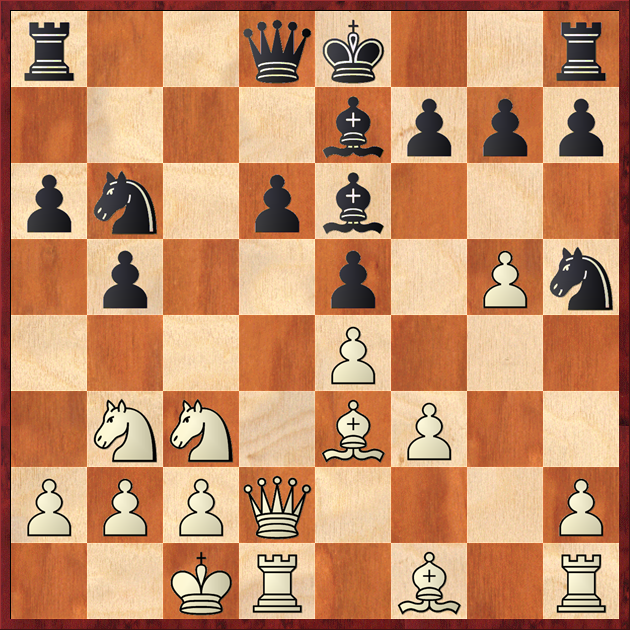
The board has reached one of the tabiya of the English Attack in a variation of the Naijdorf.
13.Nd5 Nxd5
Black declines the exchange of the e6 bishop since it is important to the defense of the light squares.
An alternative was 13...Bxd5 14. exd5 Rc8, keeping the possibility of play against the pawn d5. In the game J. Polgar – Fressinet (Istanbul, 2000) there followed 15.Na5 Nxd5 16.Qxd5 Qxa5 17.Bh3 Rc4 18.Bg4 and white has an initiative in return for the sacrificed pawn.
14.exd5 Bd7 15.Na5 Qc7 16.Kb1 0–0
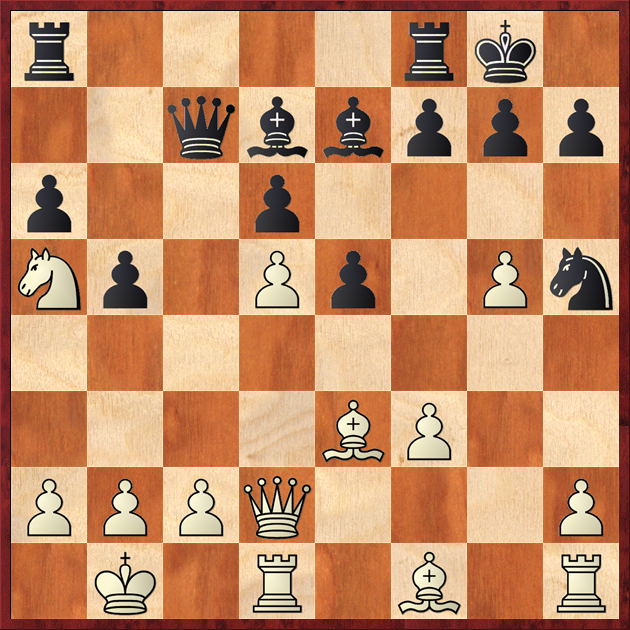
The critical position, characterized by the placement of knights opposite each other at the end of the board, where, strange though it is, they are performing a great deal of work! The black knight is hindering the advancement of his opponent's kingside pawns and, simultaneously, preparing to leap to f4. The white knight is performing an analogous function—he has blocked black's activity on the queenside and keeps open the possibility of invading at square c6. The leap to c6 may even be played as a sacrifice so long as it leads to a white domination of the light squares.
The evaluation of the position reveals that the sides cannot stick to the usual strategy for situations of kings castled on opposite sides of the board, that of pawn storming the opponent's king. What's more, the players must play actively on the side of the board of their own king! What's appleaing for white is preparing for the pawn advance c3-c4, paving the way for c6. Black, in turn, needs to find counterplay on the kingside, with ideas of pushing f7-f5 (or f7-f6), revealing the weakness of his opponent's f-file.
I think that here proponents of the the King's Indian Defense can feel the the remarkable compatibility of the idea to their pet opening. Similar collisions frequently arise in, for instance, the Sämisch Variation of the King's Indian Defense.
17.Rg1 g6 18.c4! f6! 19.Rc1
The sides thoroughly methodical in the realization of their plans.
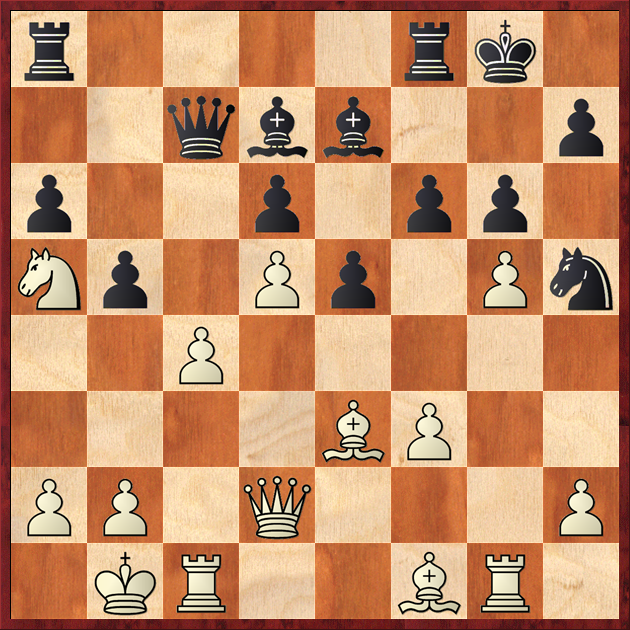
19...b4!
Well played! The pawn sacrifice puts the brakes on white's advance along the c-file. Also, the opening of the b-file may give black some counterplay against the white king.
20.Qxb4 Rab8 21.Qc3 fxg5 22.Bxg5
It seems the e3 bishop was stronger than the e7 bishop, but this is no greediness. The thing is, black's “Indian” bishop could, in the future, find activity on the long diagonal.
22…Bxg5 23.Rxg5 Nf4
For the sacrificed pawn black has received the traditional “Indian” compensation, a bind on the dark squares. Now worthy of attention was 23...Qc5, inhibiting the opponent's next move.
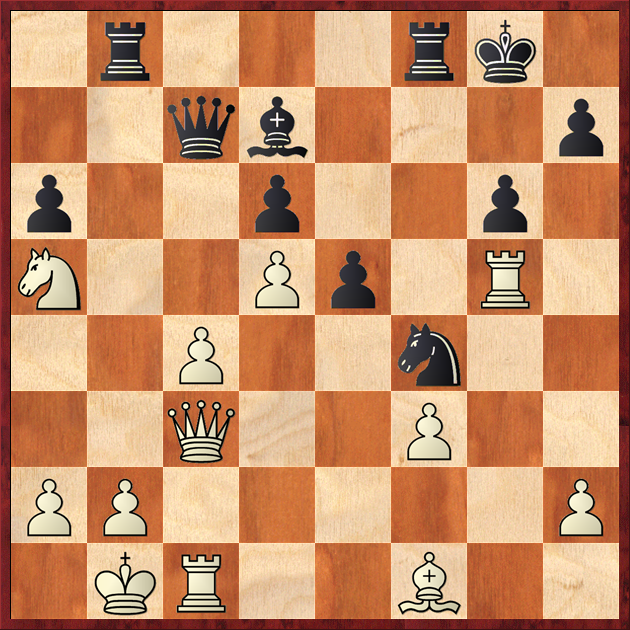
24.c5!
White is absolutely obligated to undermine the dark-square blockade and resuscitate the f1 bishop!
24…Bb5!
The capture 24...Nxd5
was not even worth consideration. It allows something like 25.Bc4 Qxc5 26.Nb3 Kg7 (26...Qc6? 27.Qd3 Be6 28.Rxg6+!) 27.Qxe5+ dxe5 28.Nxc5 in white's favor.
25.Nb3
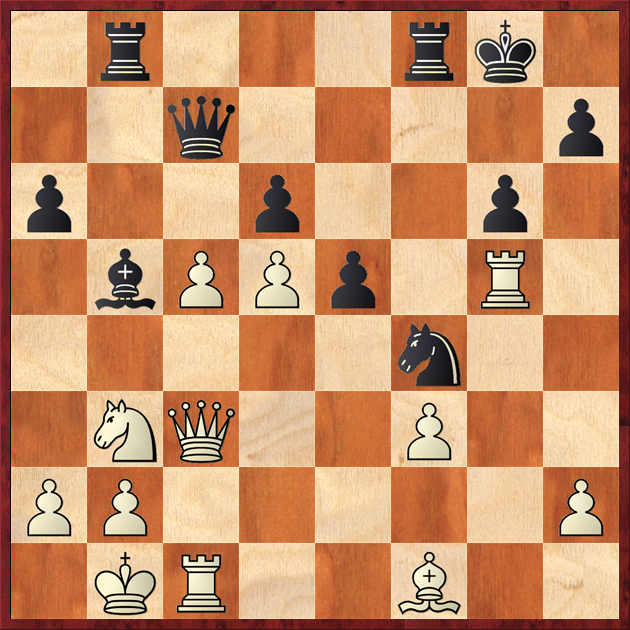
25...Rfe8?!
In a sharp situation black lets slip a significant inaccuracy.
Among the many alternatives, we will consider the computer's recommendation - 25...a5!?, involving the edge pawn in the struggle against the white center and king. These are the lines illustrating the position's possibilities from the black's point of view: а) 26.cxd6 Qxc3 27.bxc3 Bxf1 28.Rxf1 a4; b) 26.Bxb5 Rxb5 27.cxd6 Qxd6 28.Qxe5 Qxe5 29.Rxe5 Nd3; с) 26.Qxa5 Qxa5 27.Nxa5 Bd3+ 28.Bxd3 (28.Ka1 Rb5 29.Nb3 Rxb3) 28...Nxd3 29.Nc4 Nxc1 30.Kxc1 dxc5; c) 26.Nxa5 Bxf1 27.Rxf1 Ne2 28.Qc4 Qxa5 29.Qxe2 Qxc5 30.Qd3 Kg7 etc. – every case entails a complicated battle in store.
26.Bxb5 Rxb5 27.cxd6 Qxd6
Black was unsatisfied with 27...Qxc3 28.Rxc3 Rxd5 29.Rc6.
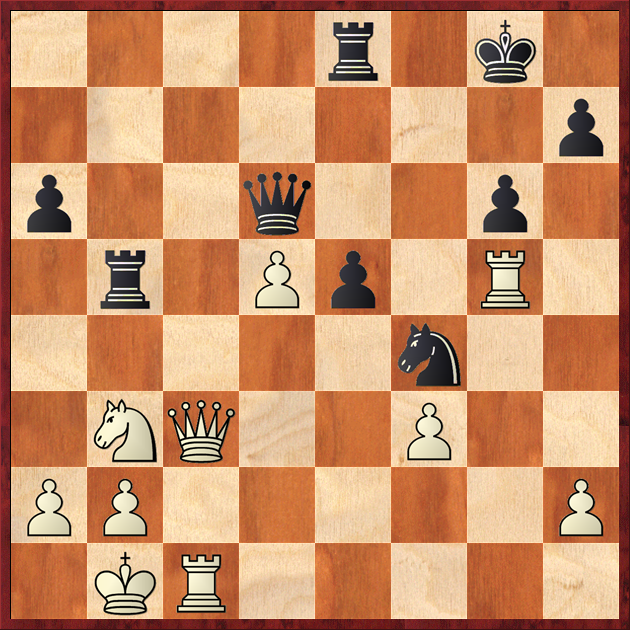
28.Qc6!
This is the point! The e8 rook finds itself under attack, and black doesn't have time to dispose of the surrounded pawn on d5.
28…Qd8 29.Nc5 Rb6 30.Qd7 Ne2 31.Rc2 Nd4
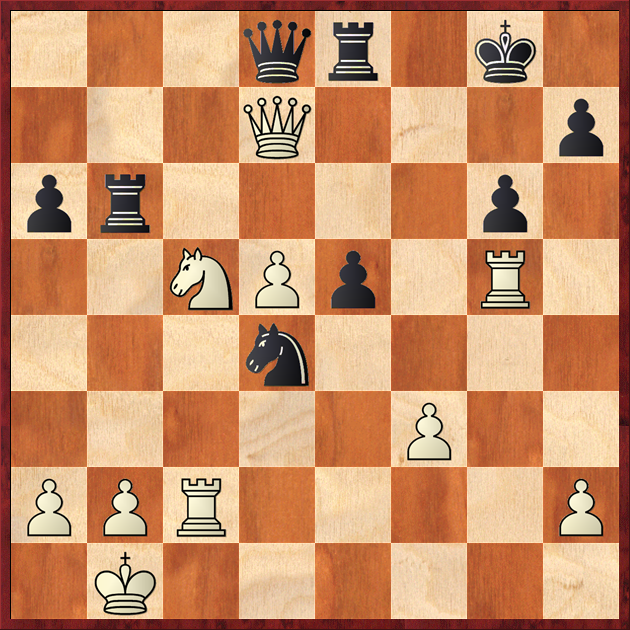
32.Rxe5!
A strong tactical blow, decidedly tipping the cup in white's favor.
32…Qxd7 33.Nxd7 Rxe5 34.Rc8+ Kg7
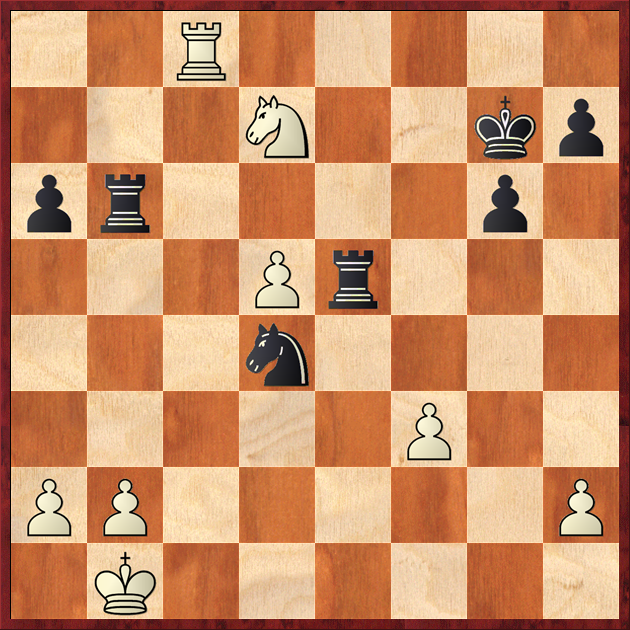
35.Nxb6
Also possible was 35.Nxe5 Rd6 36.Rc5 Kf6 37.Nc4, but the text is more accurate since it forcibly leads to a won knight ending for white.
35...Re1+ 36.Rc1 Rxc1+ 37.Kxc1 Kf6
And in case of 37...Nxf3 38.b4 g5 39.a4 g4 40.Nc4 the white pawns advance to the queening square in all haste.
38.f4 Ne2+ 39.Kd2 Nxf4 40.Ke3 Kf5 41.Kd4 g5 42.a4 h5 43.b4 g4 44.Nc4 Kf6 45.b5 axb5 46.axb5 Ke7 47.b6 Kd7 48.Ne5+ Kc8 49.Ke4 Ne2 50.d6 Nc3+ 51.Kd4 1–0















